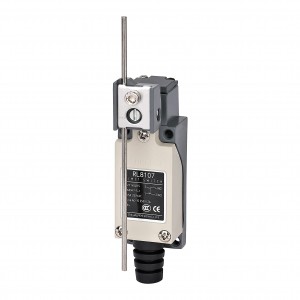Introduction

In industrial equipment, outdoor machinery, and vehicle-mounted electronics, micro switches often need to operate in extreme conditions such as high and low temperatures, high humidity, salt fog, vibration, etc. These extreme conditions act as "examiners", testing the performance limits of micro switches. In the face of challenges, the industry has innovated through material development, structural optimization, and process upgrading to create "protection armor" for micro switches to withstand harsh environments.
High Temperature and Low Temperature: Material Challenges of Extreme Conditions
In high-temperature environments, ordinary plastic casings may soften and deform, while metal contacts may become oxidized and cause poor contact, and the spring plate's elasticity may decline, leading to malfunction. For example, the temperature in engine compartments often exceeds 100°C, and traditional switches are difficult to work stably for a long time. In low-temperature environments, plastic casings may crack, and metal components may be affected by cold contraction, causing movement jams, such as outdoor equipment switches in northern winters may fail due to freezing.
Solution Breakthroughs Start from the Material Source: High-temperature switches use ceramic contacts and glass fiber reinforced nylon casings, which can withstand a wide temperature range of -40°C to 150°C; special models for low-temperature environments use elastic materials for the spring plate, and the casings are added with anti-freezing modifiers to ensure good mechanical performance at -50°C.
High Humidity and Salt Fog: Sealing Battle Against Moisture and Corrosion
In high-humidity environments, water vapor infiltration can cause contact points to rust and internal circuits to short circuit. For example, switches in bathroom equipment and greenhouse machinery are prone to poor contact. In salt fog environments (such as coastal areas, ship equipment), the presence of sodium chloride particles adhering to the metal surface forms electrochemical corrosion, accelerating spring plate fracture and casing perforation.
To overcome the problem of moisture and corrosion, micro switches adopt multiple sealing designs: silicone rubber seals are added to the joint of the casing to achieve IP67 level waterproof and dustproof; the surface of the contacts is plated with inert metals such as gold and silver, or coated with nano anti-corrosion coatings to prevent direct contact between water vapor and metal; the internal circuit board uses anti-humidity sealing technology, ensuring that even in a 95% humidity environment, the corrosion process can be effectively delayed.
Vibration and Impact: Continuous Contest of Structural Stability
Mechanical vibration and impact are common "interferences" in industrial equipment, such as in construction machinery and transportation vehicles, they cause the contacts of micro switches to loosen and the spring plates to shift, resulting in signal mis-triggering or failure. The welding points of traditional switches are prone to detachment under high-frequency vibration, and the snap fasteners may also break due to impact.
Solution Focuses on Structural Reinforcement: An integrated stamping molding metal bracket is used to replace the traditional assembly structure, enhancing the anti-vibration ability; the contacts and spring plates are fixed by laser welding, combined with anti-loosening design, ensuring a stable connection; some high-end models also incorporate damping buffer structures to absorb impact forces during vibration and reduce component displacement. After testing, the optimized switches can withstand vibration acceleration of 50g and impact loads of 1000g.
From "Adaptation" to "Exceedance": Comprehensive Reliability Upgrade in All Scenarios
Facing harsh environments, the development of micro switches has shifted from "passive adaptation" to "active defense". Through simulation technology to simulate performance in extreme conditions, combined with advancements in material science and manufacturing processes, the industry is constantly breaking through environmental limitations: for example, explosion-proof switches for the chemical industry add explosion-proof casings on top of high-temperature and corrosion resistance; ultra-low-temperature models for aerospace equipment can maintain a million times of trouble-free operation in -200°C environments. These technological innovations enable micro switches not only to "survive" in harsh environments but also to "work" continuously and stably.
Conclusion
From High-Temperature Furnaces to Polar Equipment, from Humid Rainforests to Coastal Terminals, micro switches, through continuous evolution in reliability, prove that "small components also have big responsibilities". Through multi-dimensional optimization of materials, design and processes, it is becoming a reliable choice for industrial automation and intelligent equipment in dealing with extreme environments. With each precise action, it safeguards the stable operation of the equipment.
Post time: Jul-08-2025






